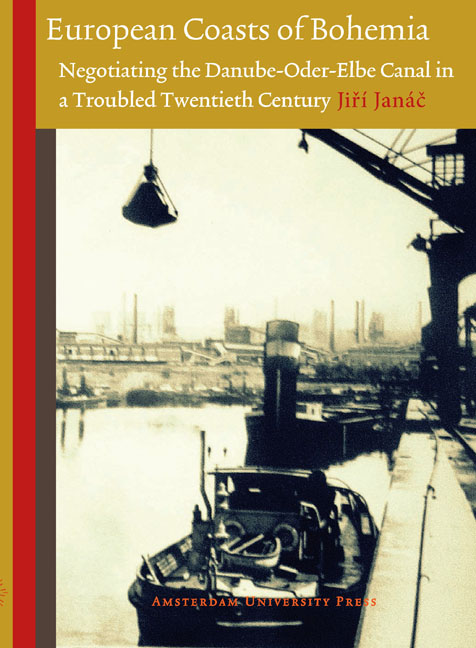2 - Mittel-Europeanization on Waterways
Published online by Cambridge University Press: 10 December 2020
Summary
While a Central European railway network has been fully developed, everybody has completely forgotten about the inland waterways. There the problem of the Central European Waterways arises.
Looking at a standard map of what is now Europe, you would hardly notice any signs of a waterway network in the middle. A mountainous belt reaching from the Swiss Alps through Bavaria and Czechoslovakia to the Carpathians forms a watershed that divides Europe without leaving much space for anything aspiring to be called “the Middle.” The watershed actually is the center; all other parts inevitably belong to either the river basin or the waterway systems. Hence, the call to improve the unified Central European Waterway network was not so much a complaint about the state of affairs at the time, but an articulation of a vision of Central European integration in terms of waterways.
Other visionaries articulated the need to overcome the main continental watershed in a continental rather than regional context. Count Coudenhove- Kalergi, the famous inter-war prophet of a united Europe, analyzed its spatial divisions. He identified two detached river basins as core regions dividing the continent into a western and an eastern part, the center of which was their intersection, which included the states whose territories drained both the Rhine and the Danube. However, Coudenhove-Kalergi argued that Europe became smaller after World War I, when the USSR left the European scene, and the notion of Central Europe became redundant. Germany and Switzerland joined the industrial West (Industrie-Europa) and Austria moved to the agrarian Danubian East (Korn-Europa). Applying the watershed metaphor, Coudenhove-Kalergi spoke of a Rhein-Europa and a Donau-Europa.
The most striking feature of the concept of the Central European waterway network was indeed its material non-existence. Professor Elemér Hantos of the University of Budapest made this point clear at the opening of the Mitteleuropäische Binnenschiffahrtkonferenz in Budapest in 1929. Hantos defined Central Europe as the area consisting of the river-basins of the Vistula, Oder, Elbe, Weser, Rhine, and the (disconnected) Danube. The Danube waterway, disconnected from all other river basins in the region, remained underdeveloped compared to the Rhine. However, Hantos’ conclusion differed from Coudenhove-Kalergi.
- Type
- Chapter
- Information
- European Coasts of BohemiaNegotiating the Danube-Oder-Elbe Canal in a Troubled Twentieth Century, pp. 27 - 84Publisher: Amsterdam University PressPrint publication year: 2013



